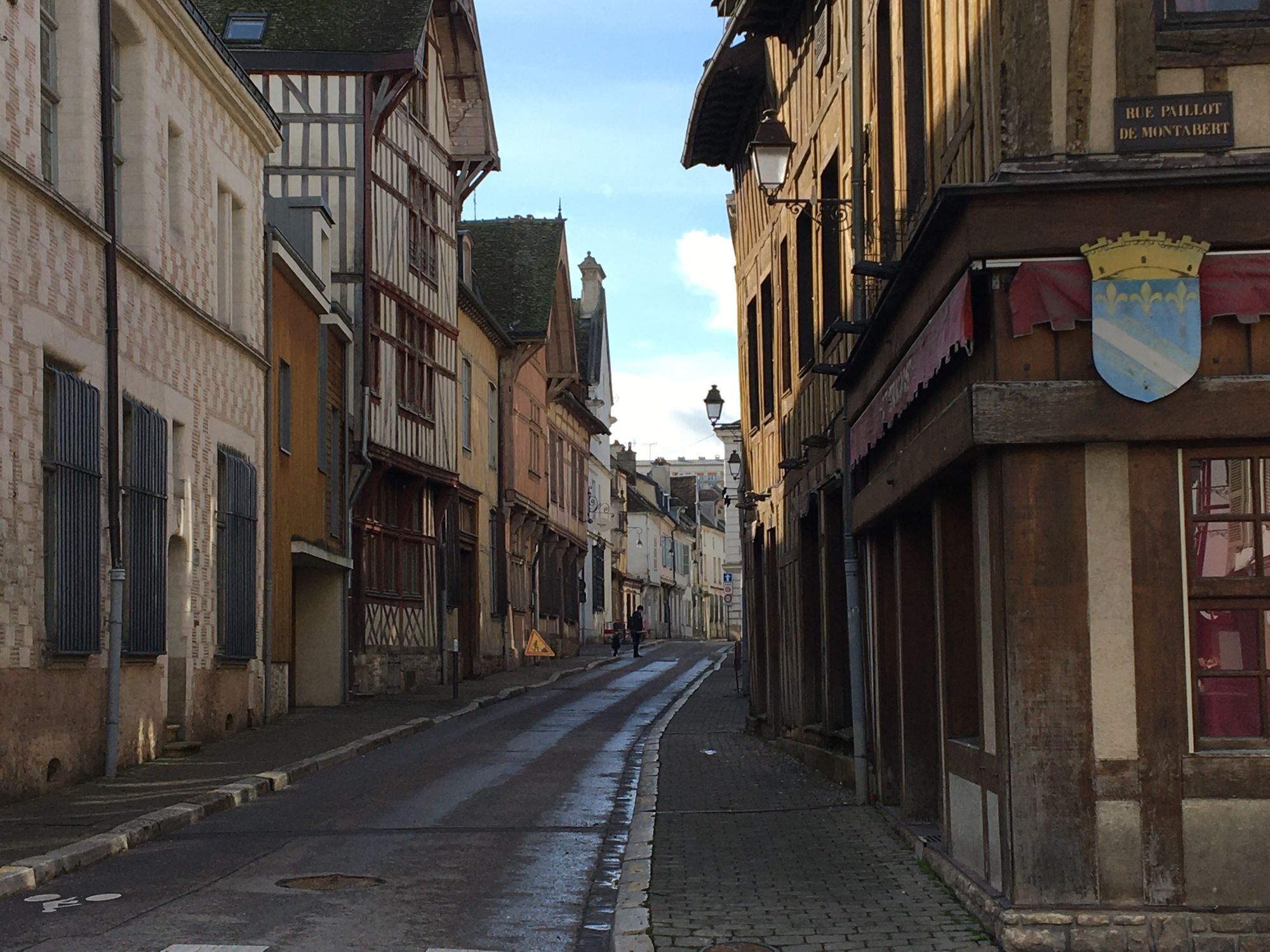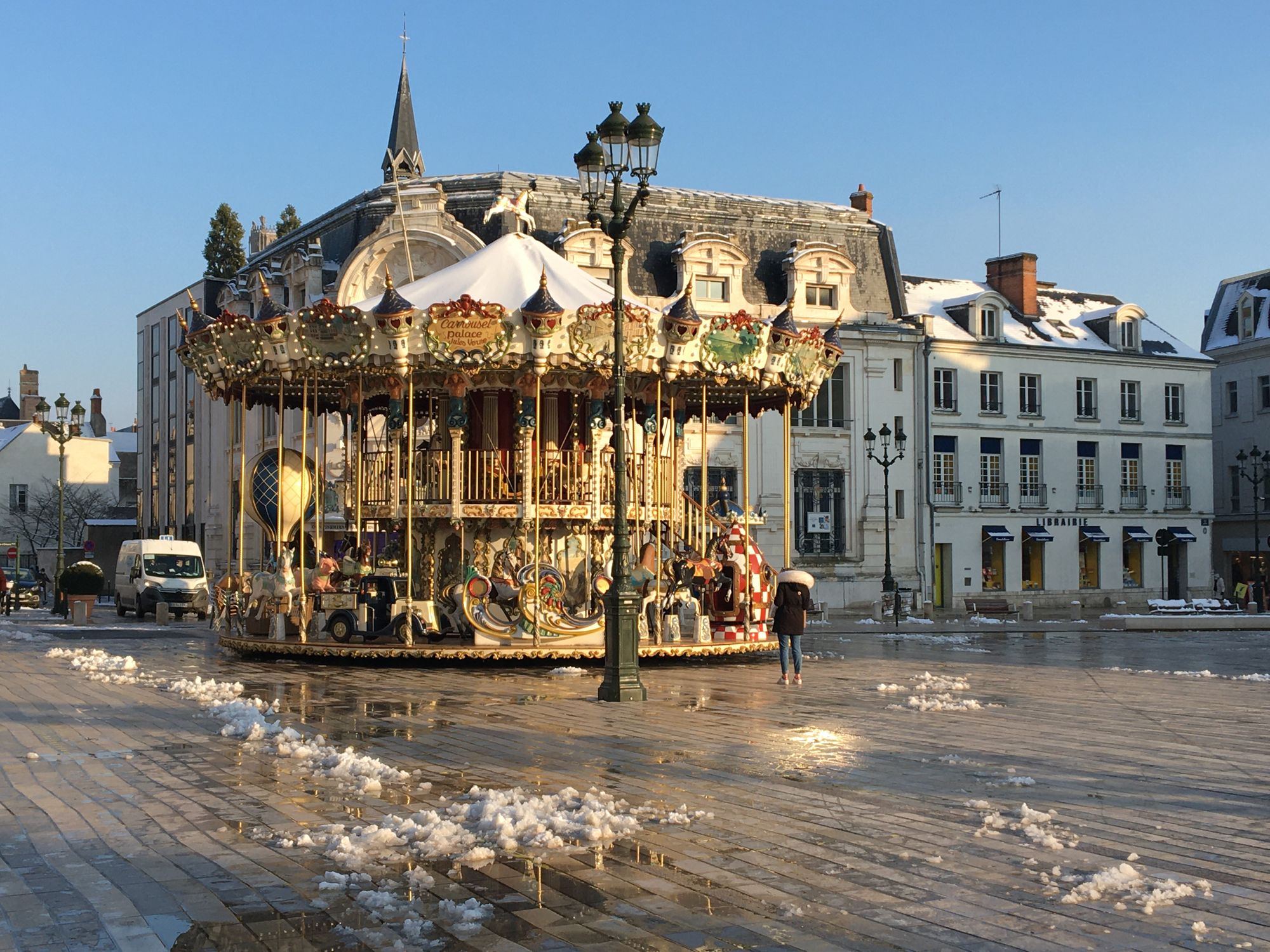By Xander Brett, Third Year, History of Art and French
The Croft Magazine // In this week's edition of 'Letters from Paris', Xander Brett discusses his trip to Orléans and Reims and Michel and Albert Roux.
21st February, 2021
Well, thankfully the rain turned to snow, and it’s been blue skies ever since. After ticking-off Amiens in conditions that no doubt revealed the best of its concrete, I spent the last two weeks trailing the campaign of Joan of Arc. Last week I visited Orléans and Reims, this week Troyes and Tours. I found that, while the city of Orléans capitalises on Joan’s image, over in Reims there’s little mention of her… nor the role Reims played at the end of the Second World War. In a small, red-brick school by the railway tracks, the first document of Nazi surrender was signed. On 5th May, Karl Dönitz (Hitler’s short-lived successor) sent Admiral Hans-Georg von Friedeburg to negotiate the terms and, a day later, his representative, Alfred Jodl, arrived to sign. It was completed in the early hours of 7th May, repeated in Berlin.

In 1429, Joan of Arc turned besiegers into besieged. The Crown of France was in dispute between the Dauphin Charles (son of Charles VI) and Henry VI of England, in allegiance with Philip of Burgundy. The English closed their forces around Orléans. But, on the evening of 4th May, a young Joan suddenly sprang from her sleep, divinely inspired. She announced it was time to expel the enemy and, incredibly, the army followed the orders of this 18-year-old girl. They pushed the English from Orléans, and Joan met the Dauphin in Tours, taking him through Troyes to Reims, the traditional site of French coronations. Joan’s extraordinary campaign, and her later martyrdom, has made her, to this day, an icon to rival Marianne (embodiment of the Republic). But, like so many icons, her image has also been manipulated. Two weeks ago, Marine Le Pen faced Interior Minister Gérald Darmanin on France 2. Under the leadership of Le Pen’s father, the Front National (now ‘Rassemblement National’) used Joan’s image as a reminder of how to fight off unwelcome foreigners. When Marine took control, she was seen by supporters as a modern-day Joan.

As the election approaches, we’ll no doubt be seeing much more of Le Pen in the months to come. But, to change course (and I should have mentioned this weeks ago), I’d like to remember the lives of Michel and Albert Roux, the brothers who brought haute cuisine to England. Michel died last year, Albert last month… and this time last year I was making a documentary on the television cook Keith Floyd. One of the most fascinating conversations I recorded was with the owner of a jewellery shop, whose garden backed onto his Floyd’s bistro in Clifton. During the late 1970s, it was from Floyd’s kitchen she first smelt garlic.

French ingredients weren’t used in England until long after the War, and it was Floyd and the Roux brothers who introduced them. Albert and Michel grew up above a charcuterie, moving to England after their military service. Albert worked for Peter Cazalet, Michel for Philippe de Rothschild. In 1967, they joined forces to open Le Gavroche. It became a fast favourite of the Queen Mother and Charlie Chaplain, who was chauffeured there every day from his suite at the Savoy. In 1974, when Michelin ratings went international, Le Gavroche was the first British restaurant to get a star. By 1982, it had three. The chefs who trained in its kitchen: Pierre Koffmann, Gordon Ramsay, Marcus Wareing and Marco Pierre White. With these celebrities, the Roux legacy is secured. Their scholarship, founded in 1984, is now headed by Alain Roux and Michel Roux Jr. … Gosh, who’d have thought I’d mention Marine Le Pen and Michel Roux Jr. in the same article! Well, one’s certainly nicer, but they’re equally intimidating.
Featured Image: Epigram / Xander Brett
Listen to Xander's weekly Burst Radio podcast 'Letters from Paris'.









